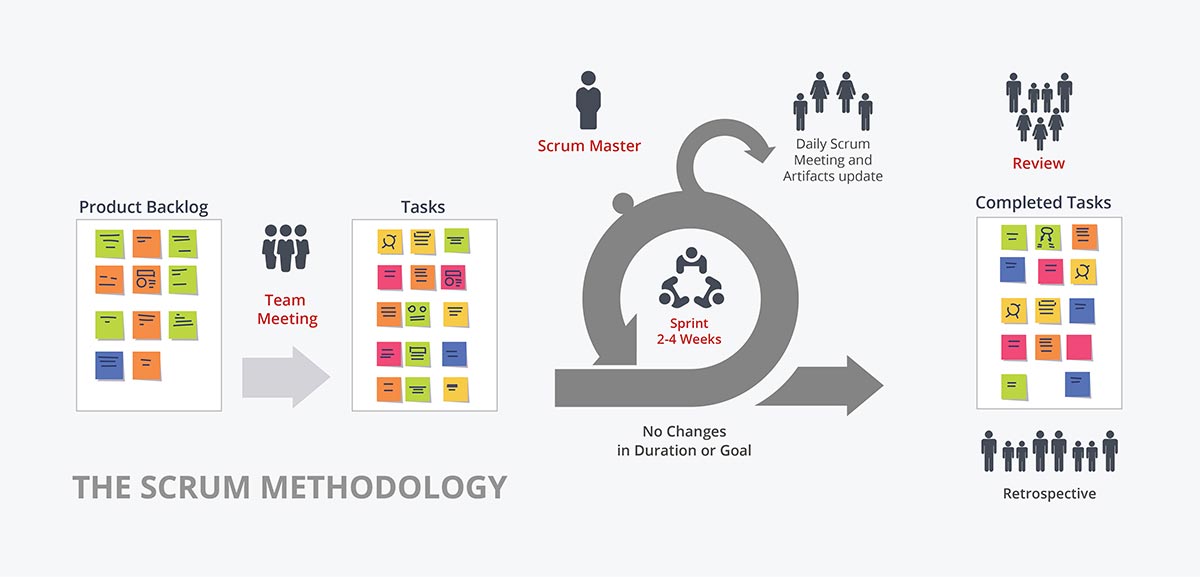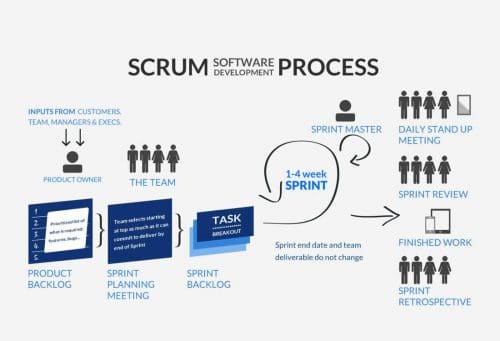Scrum is an agile way to manage a project, mainly used in software development projects. Agile software development with scrum can be seen as a framework for managing a process. The best part of this methodology is that the scrum software development team focuses on the desired outcome or result, rather than providing detailed descriptions of how things need to be done. Entry criteria, Task definitions, Validation criteria and Exit criteria (ETVX) are not discussed during sprint meetings but a set of features that needs to be developed in the next sprint and the desired result are described.

Why we love scrum?
- To begin with, scrum relies on a self-organizing, cross-functional team. Instead of a team leader/manager, the whole team takes part in the process of solving problems and deciding on who should do a specific task.
- The team is cross-functional, and everyone in the team needs to take responsibility. With everyone required to work throughout all the stages, from idea to implementation, there is greater visibility.
- With the scrum model, the project progress is accomplished through series of sprints. In agile methodology 2-week-long sprints are the most common. They are time boxed to no more than a month long.
- Each sprint begins with a sprint planning meeting. Scrum master, development team, product owner and stakeholders attend this meeting. The product owner creates and organizes a product backlog consisting of list of tasks, user stories and other requirements, while the development team works together to estimate time, list out the tasks and subtasks. By the end of the meeting, the team develops realistic sprint backlog with a plan to deliver all the tasks detailed in the meeting.
- All team members are required to attend a daily scrum meeting to discuss the items they have worked the previous day, the roadblocks and the tasks to work on that day. This meeting usually don’t exceed more than 15 minutes.
- A sprint review is conducted at the end of the sprint to show the stakeholders the work completed over the sprint, new modifications or changes. Stakeholders provide their feedback and the comments received will probably be used in the next sprint planning.
- On the last day of the sprint, another important meeting is held, the team retrospective. In this meeting, they identify the items the team is doing well and should continue to do; things they should start doing; and things they should stop doing are identified. The meeting is carried out by the scrum master and the product owner.
Scrum Process
Within the scrum Framework there are three roles, the scrum team, scrum master and the scrum product owner. Each of these roles have a set of responsibilities, and they interact and work together to complete the project. A scrum master focuses on helping the team to be the best they can be, a product owner directs the team to achieve the desired goals and prioritizes the backlog, and the scrum team who works to deliver the tasks and committed product increment.
Scrum model as mentioned earlier focuses on the product and that feature makes scrum methodology ideal for software development. Another important aspect of the scrum includes sprint burndown chart and release burndown chart. Burndown charts show the amount of work remaining either in a sprint or a release, and determines whether the planned work will be finished on the desired date.




